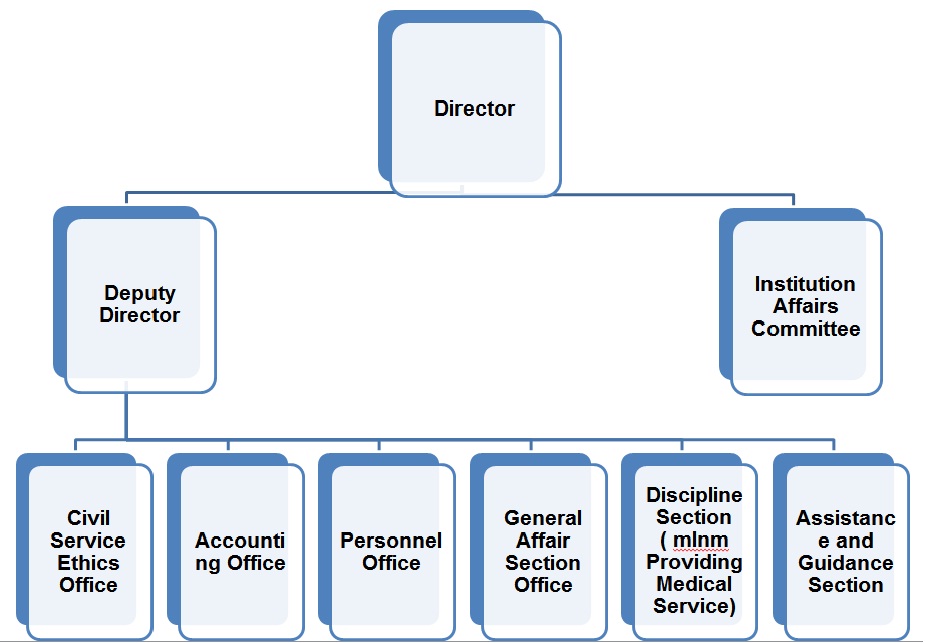The Organizational system
- Publication Date :
- Last updated:2022-09-28
- View count:4120

The Detention House have each one Director and Deputy Director. In the facility we have several sections including Assistance and Guidance Section, Discipline Section, Personnel Office, Accounting Office and Civil Service Ethics Office each one section have one executive officer. The formations of the Detention House have Doctors, Registered Nurse, Officer, Sergeant, Trainer, Technician and Driver each one of them in charge of their services and bring into a highly administrative efficiency.
1 Major functions
The detoxification facility, which takes both drug offenders and drug-inclined youngsters under 18 years of age, is designed to survey the behavior, history, mental and physical condition, educational background, family status, and the social environment of these youngsters for the Juvenile Court’s reference. Another aim is to help them go straight and move upwardly so that they can adapt themselves to normal life in society.
2 Classification
a. Survey of individual cases
The staff members of the Classification Section are in charge of documenting each aberrant youngster’s behavior, history, mental and physical condition, educational background, family status, and social environment and establishing individual case files.
b. Psychological test
After a juvenile is admitted into this facility, he or she is subjected to psychological tests according to his or her educational background. The results of the tests are to be compared with the standardized table of norms, thoroughly analyzed and carefully interpreted to serve as the basis of evaluation. Currently, the three psychological tests implemented are the Standard progressive Matrices, the Health Personality Habit, and the Career Interest Inventory.
c. Mental classification and analysis
The detention house retains neurologists in the classification and correction work for mentally abnormal and psychological aberrant youngsters. A brain-wave examination room was established in 1980 for special cases. The aim is to find out the non-behavioral factors. Since inauguration, it has contributed much to the processing of many cases.

